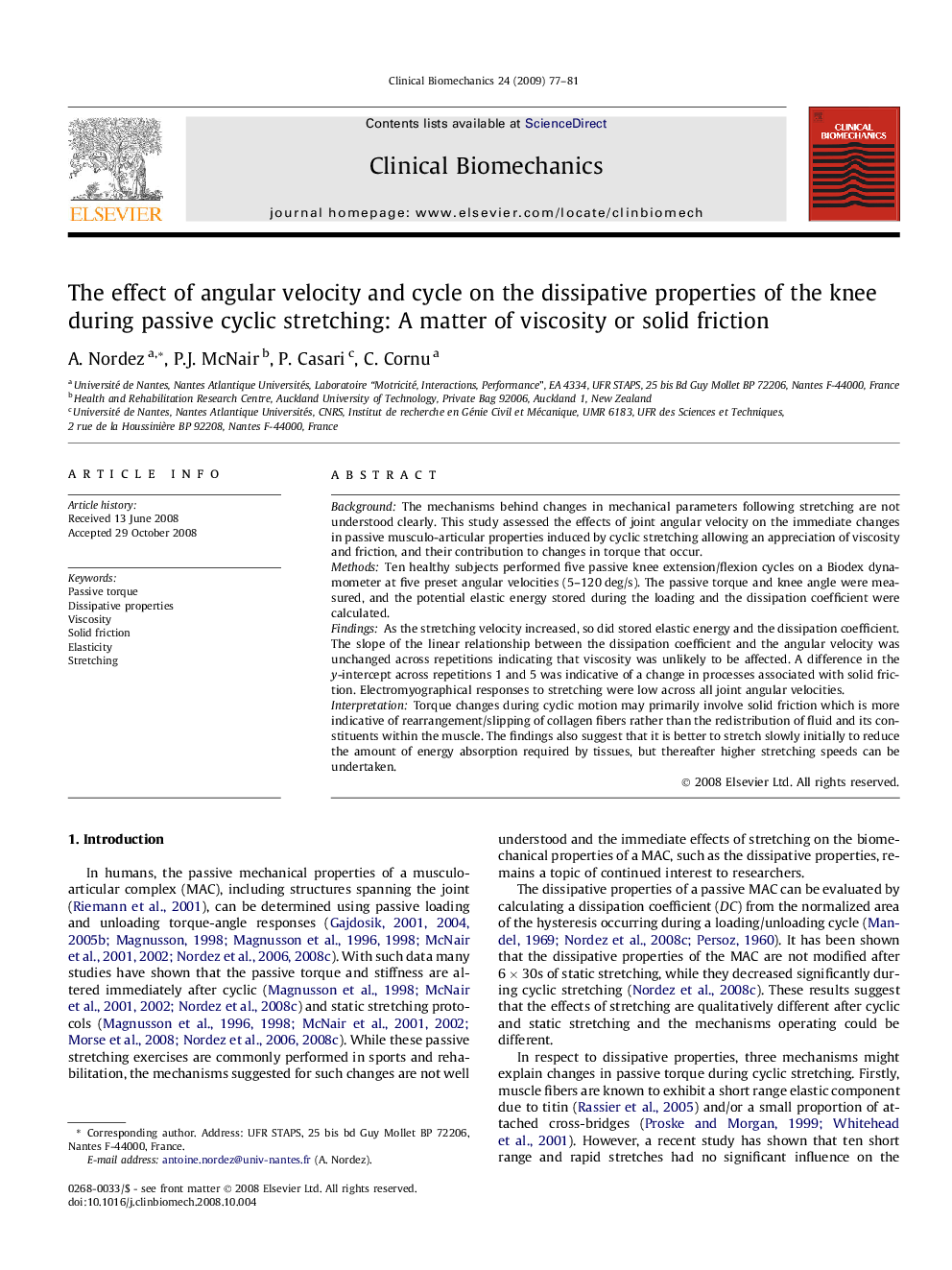| کد مقاله | کد نشریه | سال انتشار | مقاله انگلیسی | نسخه تمام متن |
|---|---|---|---|---|
| 4050848 | 1264961 | 2009 | 5 صفحه PDF | دانلود رایگان |

BackgroundThe mechanisms behind changes in mechanical parameters following stretching are not understood clearly. This study assessed the effects of joint angular velocity on the immediate changes in passive musculo-articular properties induced by cyclic stretching allowing an appreciation of viscosity and friction, and their contribution to changes in torque that occur.MethodsTen healthy subjects performed five passive knee extension/flexion cycles on a Biodex dynamometer at five preset angular velocities (5–120 deg/s). The passive torque and knee angle were measured, and the potential elastic energy stored during the loading and the dissipation coefficient were calculated.FindingsAs the stretching velocity increased, so did stored elastic energy and the dissipation coefficient. The slope of the linear relationship between the dissipation coefficient and the angular velocity was unchanged across repetitions indicating that viscosity was unlikely to be affected. A difference in the y-intercept across repetitions 1 and 5 was indicative of a change in processes associated with solid friction. Electromyographical responses to stretching were low across all joint angular velocities.InterpretationTorque changes during cyclic motion may primarily involve solid friction which is more indicative of rearrangement/slipping of collagen fibers rather than the redistribution of fluid and its constituents within the muscle. The findings also suggest that it is better to stretch slowly initially to reduce the amount of energy absorption required by tissues, but thereafter higher stretching speeds can be undertaken.
Journal: Clinical Biomechanics - Volume 24, Issue 1, January 2009, Pages 77–81